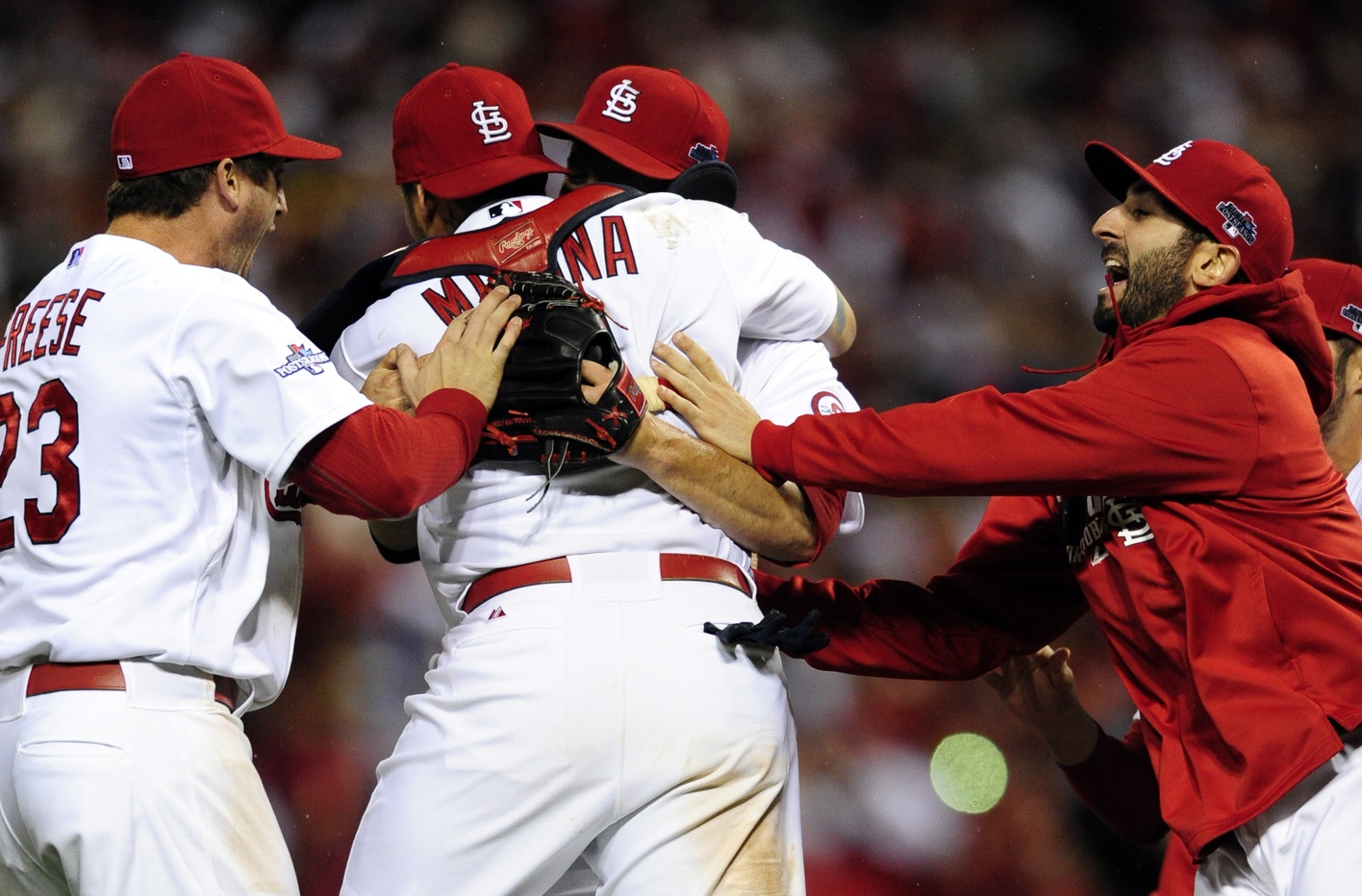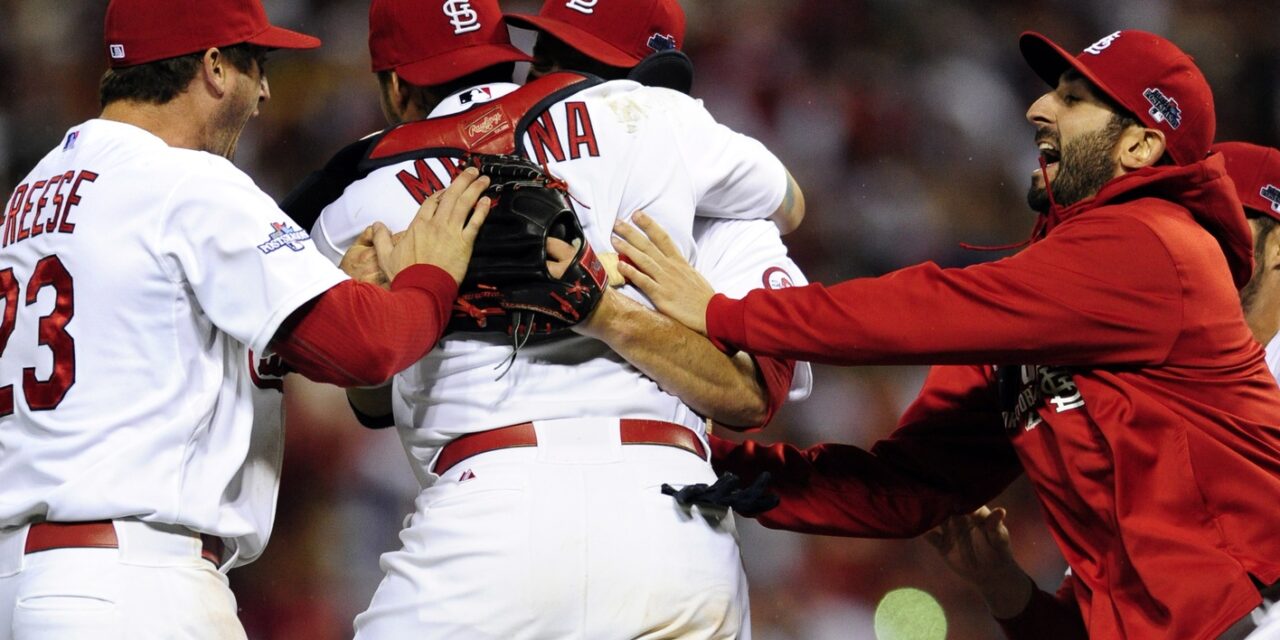 With the St. Louis Cardinals eliminating the Dodgers and reaching the World Series again, New York Times sportswriter Tyler Kepner claims it’s easy to understand why some people think of the Cardinals as the Yankees of the National League. Only the Yankees have won more World Series championships than the Cards. This fall’s World Series stop marks the fourth time the Redbirds have made the big dance since 2000 and eleventh time they’ve made the post season.
With the St. Louis Cardinals eliminating the Dodgers and reaching the World Series again, New York Times sportswriter Tyler Kepner claims it’s easy to understand why some people think of the Cardinals as the Yankees of the National League. Only the Yankees have won more World Series championships than the Cards. This fall’s World Series stop marks the fourth time the Redbirds have made the big dance since 2000 and eleventh time they’ve made the post season.
Although many might believe that kind of success is the stuff of a sustained run, Kepner explains how the Cardinal magic is actual the result of two different runs. runs ignited by two contrasting management philosophies.
From 2000 to 2006, the Cards built their championship teams around acquiring star quality players through trades. A major part of the ‘Cardinal Way‘ at that time was to use young minor league prospects as trading chips to bring in more established stars.
Interestingly, the Mets utilized a similar ‘big star’ strategy during that era incorporating both trades and free agency as their primary tools of acquisition.. Carlos Delgado did arrive in New York in 2005 in a trade for Mike Jacobs, Yusmeiro Petit, and Grant Psomas. Paul Lo Duca came by trade during a Marlin purge. “El Duque” was added in 2006 in a trade for reliever Jorge Julio, and Shawn Green joined the Mets in a trade for pitching prospect Evan MacLane.
The Mets were active in the free agency hunt for baseball talent as well. Big name players like Cliff Floyd, Carlos Beltran, Mike Cameron, Pedro Martinez, Tom Glavine, Billy Wagner, and Kazuo Matsui were all procured through free agency signings.
Baseball’s new labor agreement and the advanced ages of many of their baseball stars helped the Cardinals change their management philosophy. That shift evolved slowly over time beginning about 2003-2004. Anticipating the consequences of aging stars and the new labor agreement, rather than try to obtain high octane baseball talents from other teams, the Cardinals made a concerted effort to start developing that talent through their own minor league system. For example, rather than give up future draft choices in trades for established talent, the Cardinals stockpiled draft choices for development in their own system.
The majority of Cardinals advancing to the World Series this fall are home grown. For the most part, only Carlos Beltran and Matt Holliday came by signing or trade. Kepner adds that the Cardinals have used seven home grown pitchers in post season play this month that weren’t on the roster two years ago. Neither were three starting infielders; Mike Adams at first base, Matt Carpenter at second and Pete Kozma at third.
Kepner leaned heavily on comments from Dodger catcher A.J. Ellis in his piece. “They’ve got a system and it works. They have an organizational philosophy that’s obviously successful, and these guys keep coming in waves and waves and waves,” Ellis told him.
Ellis says the Cardinals look for young players with a similar make up, often college position players, sprinkle in a few high school prospects and go after young power pitchers they can develop.
Michael Wacha, the young Cardinal pitcher who has electrified the baseball world this fall, was a compensation draft pick the Cards picked up when Albert Pujols signed with the Angels.
As I read this fascinating article, I couldn’t help but draw parallels between the “Cardinal Way” and what appears to be the “Met Way.” The steps the Mets have made over the past three years share many similarities with those already put into place in St. Louis.
 The Mets, too, have adopted an organizational philosophy of developing baseball talent from within. Like the Cardinals, the Mets have concentrated first on stockpiling power pitching arms they can develop. And, taking another page from the Cardinal management book, the make up of the prospects they select is a priority consideration.
The Mets, too, have adopted an organizational philosophy of developing baseball talent from within. Like the Cardinals, the Mets have concentrated first on stockpiling power pitching arms they can develop. And, taking another page from the Cardinal management book, the make up of the prospects they select is a priority consideration.
One big missing piece for the Mets front office so far is the ability to execute the maneuvers needed to bring in those two or three position players who are difference makers, guys like Beltran and Holliday for the Cards. Many underestimate the impact two or three key bats can have on a lineup.
I’ll never forget the unbelievable start the Mets had in 1972 and then how they plummeted like a rock after Rusty Staub broke his wrist diving to make a catch in right field. Prior to Staub’s injury the Mets lineup produced. After Rusty went down the lineup was a powder-puff and promising pennant winning hopes evaporated into thin air. One or two added accomplished major league hitter’s can make the entire lineup better, even a lineup like the one employed by our Mets.
St. Louis owner, William DeWitt Jr. told Kepner that it’s one thing to have a plan and an entirely different matter to execute it. That’s a brilliant observation and one the Met management should consider seriously.
The addition of two or more ‘difference making’ bats in the line-up over the off-season will accelerate the Met rebuilding plan, a plan much like that used by the Cardinals built around home grown talent. Off-season moves of that sort would also be symbolic, a signal to an increasingly despondent fan base that the baseball improvement they have been promised is more than a plan, it’s a multi-faceted strategy that will result in competitive baseball and serious contention for post season play, now rather than later..















